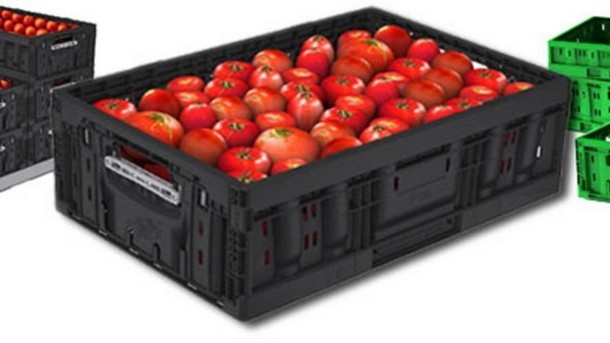Up to 64% of reusable plastic containers (RPCs) used to ship fruit and vegetables are unsanitary, according to research.
Keith Warriner, the University of Guelph (Ontario) researcher at the help of the study, told FoodProductionDaily.com that unclean RPCs used in food transport are “a recipe for disaster. “We recommend that the decontamination method for RPCs be reviewed to prevent carriage and transfer of human pathogens."
Many Canadian retailers require that producers ship their fruit and vegetables using RPCs. The containers typically are rented, used for shipment, then returned to the US for sanitation.
Threat to health and safety
Warriner, who serves as Food Safety and Quality Assurance Program Director at the university, added that the research points out that improper sanitation of RPCs poses a real health threat.
“RPC's if not properly cleaned could distribute pathogens across a wide area,” he said. “If a batch of lettuce contaminated with norovirus was transported in an RPC which then is used to transport tomatoes, then the risk is obvious.”
Additionally, Warriner said, on top of harboring pathogens that put human health at risk, the RPCs could carry Erwinia, Pseudomonas, and other plant pathogens that could lead to premature spoilage and loss of product.
Testing methods
Researchers tested RPCs at Ontario and Quebec farms, looking for overall sanitary status, as well as bacterial counts. In addition to most RPCs failing to pass muster in relation to sanitary standards, 56% of trays had a higher aerobic count than researchers anticipated.
Because the containers were sampled as delivered, researchers ruled out the possibility that they were contaminated at the producer’s location.
Upon inspection, RPCs often appeared damaged and dirty to the naked eye.
“Some had stickers from different growers in the US and even Mexico, so obviously well-travelled,” Warriner said. “The ATP readings were high, in addition to some having high bacterial counts. Thankfully, the incidence of fecal indicators was low."
Keeping up appearances
According to André Plante, general manager of the Quebec Produce Growers Association, the study was generated in part because of member growers that had relayed anecdotes about taking delivery of RPCs that looked dirty and grimy.
“For the safety of Canadians, we need to ensure all food in Canada is shipped using clean packaging, regardless of whether it is paper or plastic,” he said.
Warriner surmised that inefficient cleaning systems and mobile wash stations on the US end of the supply chain may be to blame. He suggested improved oversight over sanitation practices on the US end could prevent contamination, adding that some growers currently line RPCs with paper to help reduce risk.
Warriner and the University of Guelph team were contracted to perform the study by marketing communications agency Smithcom.


 On-Demand Supplier Webinar
On-Demand Supplier Webinar

 Technical / white paper
Technical / white paper









1 comment (Comments are now closed)
Food Safety for all Sizes of Containers
The containers may be washed, but not sanitized with a 6 log kill solution and besides,they sit around in dirty, dusty locations for weeks or months, so they should be resanitized before loading.
Report abuse
Posted by William Kanitz
15 October 2013 | 20h27